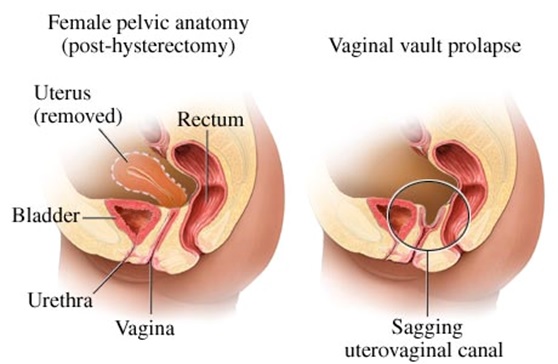Vaginal Surgery Overview
The Lingo and Descriptions
Red M. Alinsod, MD
OVERVIEW and ILLUSTRATIONS
I would like to provide an overview of the procedures and treatments that fall under the arena of Aesthetic Vulvovaginal Surgery. I also think it will be helpful to provide graphics and illustrations, to better help the understanding, and visualization of the surgeries.
The Labia and its Parts

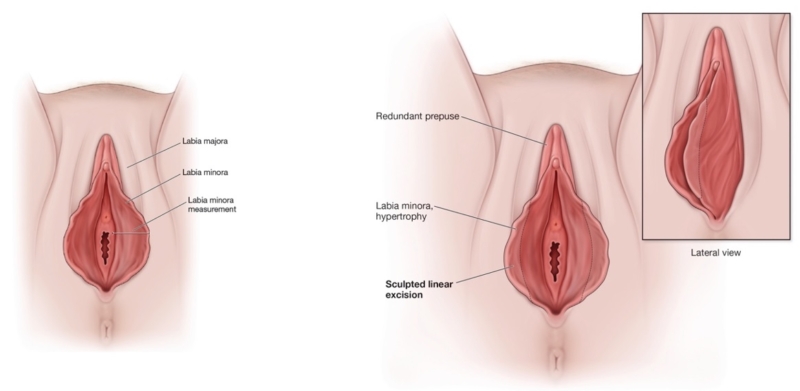
PROCEDURES
This aesthetic vaginal surgery aims to tighten lax muscles and tissues and remove excess vaginal skin to narrow the diameter of the vagina resulting in a smaller and tighter opening and vaginal canal. The tightening is done in the entire length of the vagina and not merely the opening few centimeters. Dr. Alinsod does full depth repairs unlike the superficial perineoplasty repairs done by most plastic surgeons and gynecologists. This can be done in the surgery center under general or spinal anesthesia or under local anesthetic with some sedation. However, Dr. Alinsod has refined the in-office vaginal rejuvenation surgery that does not require an IV and is done under mild sedation and local anesthesia. He use the Ellman Surgitron Radiofrequency device to make exceptionally precise and minimally traumatic incisions. This method is dramatically less destructive than the use of Yag lasers. It takes about 60 minutes to perform. Many advertise this procedure for the “Enhancement of Sexual Gratification” as well as a cosmetic procedure.
The visible area between the vagina and the rectum is called the perineum. This is the region where episiotomies are cut and where tears during childbirth are most common. Perineoplasty (or Perineorrhaphy) aims to make this region appear normal by excising excess skin, loose skin tags, and suturing the underlying muscles or the perineal body closer together to give a more snug feeling in the introitus or vaginal opening. Most plastic surgeons who perform vaginoplasty surgery are actually performing perineoplasty surgery, a more superficial procedure that does not tighten the entire depth of the vaginal canal. This procedure has been advertised by many to “Enhance Sexual Gratification.” The procedure almost always accompanies vaginoplasty since you are working in the same area. This procedure takes 30 minutes to perform.
CO2 lasers have been used for over 20 years to ablate lesions in the vaginal area. Examples include venereal warts and skin tags. They have also been used to treat precancerous vulvar, vaginal, and cervical lesions. We often marveled at the beautiful new tighter skin that grew after a laser treatment. We have used the CO2 lasers since 1986 with excellent success. Now, the CO2 laser is getting more acceptance by other gynecologists as a tool for cosmetic vaginal rejuvenation and resurfacing. Other lasers that have been used in the vaginal region include the Yag lasers of varying wavelengths. New lasers and light sources are also available. The new “Fractional” or Fraxel-type of lasers can regenerate collagen, smoothen skin, and reduce scarring without the downtime. We also have Deep IR (Infrared) heating used to tighten the skin and reduce sagging. Laser Resurfacing is done under local and topical anesthesia in the office. Laser resurfacing takes 15 to 30 minutes to perform.
Learn more about Laser Resurfacing
The urethra is the tube that drains the bladder. The urethra is where you see urine coming out. This structure may fall down just like the bladder does. This often results in leakage of urine when one coughs, laughs, jumps, or bends down. Repair of this organ often means you must place a mesh below it and support it to stop the leakage of urine. Many women have urethroceles with absolutely no symptoms. No surgery is needed in these asymptomatic patients. However, when symptoms occur, new minimally invasive technologies have been developed.
The newest and safest trend to deal with incontinence involves the use of polypropylene, an inert nylon-type material, that is placed right under the mid urethra to act as a backboard when one sneezes or coughs to then occlude or block the urethral opening and either decrease of stop the leakage of urine. These procedures are all called “Tension-Free” because the slings are not sutured into muscle, fascia, or bone and are just left alone for ones own fibroblast to ingrow and hold the mesh. You may hear the term TVT or TOT. They refer to the route the slings are placed. TVT, or tension-free vaginal tape can be placed through an incision right above your pubic bone. TOT, or transobturator tape, is placed through incisions on the crease of your inner thighs. These incisions are just about invisible. Both procedures are outpatient surgeries of about 15 to 30 minutes. Newer sling technologies have even eliminated the skin incisions and are placed totally vaginal using “short tape” technology. The success rates vary from 80 to 95 percent. Incontinence slings are done under general, regional, or local anesthesia in the surgery center or operating room. Most insurance companies cover this procedure. The cash cost of an incontinence sling is 4,000.
A cystocele is when the bladder falls down and often becomes visible. Urinary leakage often accompanies a cystocele. Cystoceles may cause pelvic pressure or just be unsightly. Cystocele repair (also called Anterior Repair or Anterior Colporrhaphy is the surgical reduction of the bulge to place the bladder back into its normal anatomic location. The traditional repair of plicating or overlapping tissues with suture unfortunately has a very high failure rate ranging from 25 to 60 percent. It is certainly one of the most challenging surgeries gynecologists and urogynecologists perform. More modern surgery treats cystoceles as a hernia of the bladder into the vagina, hence, the use of mesh or donor tissues as a patch or graft has been gaining steady acceptance. We have some of the most extensive experience in this type of surgery in the United States with success rates of about 90% in our hands. Cystocele Repair is done in the surgery center or operating room under general, regional, or local anesthesia. The procedure takes 60 minutes to perform. Most insurance companies cover this procedure.
When the bulge into the vagina comes from the rectum it is called a rectocele or rectal prolapse. As with other forms of pelvic organ prolapse (cystoceles, enteroceles, vaginal prolapse) childbirth, chronic cough, chronic constipation, and obesity are predisposing factors. Symptoms are similar to cystoceles such as pelvic pressure, an unsightly bulge in the vagina, and constipation. Furthermore, the need of reaching into the vagina to push stool out is not uncommon. A bulge into the vagina can also be caused by small bowel pushing the vaginal tissues. This is called an enterocele. It can occur at the same time as a cystocele and a rectocele. In fact, we often cannot tell what is causing the bulge in the vagina whether it is bladder, rectum, or bowel, or all! Modern repair uses mesh or donor tissue with excellent success found. This repair is technically quite challenging and few are trained in the modern repair of this problem. Surgical repair consists of using sutures to bunch up the bulging tissues together. More modern repair consists of the use of mesh or donor tissues. This newer method gives success rates of over 95% in our hands. Rectocele Repair is done in the surgery center or operating room under general, regional, or local anesthesia. The procedure takes 60 minutes to perform. Most insurance companies cover this procedure.
Learn more about Rectocele/Enterocele Repair (Rectal Repair)
A vagina that looses its support may come down and out into the open air. The degree of vaginal prolapse may vary from just having the top fall down a few centimeters to ones that completely go inside out. If a woman still has her uterus then this is called a uterovaginal prolapse. If only the uterus falls out and the top of the vagina is still well suspended then it is called a uterine prolapse. Vaginal vault suspension can be done in many ways. Some physicians prefer an abdominal approach to attach the top of the fallen vagina to the sacrum. Some highly skilled surgeons do this laparoscopicaly. The procedure is called a sacralcolpopexy. More often a vaginal approach is performed. The top of the vagina can be sutured to the uterosacral ligaments or to the sacrospinous ligaments. Either approach works well with different complications to consider. A newer procedure called the Posterior IVS (Intravaginal Slingplasty) has been developed in Australia and New Zealand, popularized in Europe, and now approved in the United States. This vaginal approach uses a polypropylene mesh that is attached to the top of the vagina and suspended “tension-free” via two small incisions near the anus and one incision in the vagina. You can view this procedure in my Video Library. The success rates of all methods are approximately the same at 80 – 90%. Vaginal Vault Suspension is done under general, regional, or local anesthesia in the surgery centeror operating room. Vaginal Vault Suspension takes 60 minutes to perform. Most insurance companies cover this procedure.
When a firm mass is felt or a hard bulge is seen protruding out the vagina it usually a cervix and uterus prolapsing past the vaginal opening. This problem typically was treated with a hysterectomy or an abdominal procedure to shorten stretched out ligaments thereby “suspending the uterus and cervix. Dr. Alinsod has pioneered vaginal surgery techniques for uterine prolapse that is entirely vaginal in approach with no skin incisions. This technique has been taught world-wide. Uterine Suspension is done under general, regional, or local anesthesia in the surgery center or operating room. Uterine Suspension takes 60 minutes to perform. Most insurance companies cover this procedure.
Learn more about Uterine Suspension
Cross Section Anatomy of the Internal Vagina
(Thank you to Dr. John Miklos and Dr. Robert Moore for the use of these illlustrations)

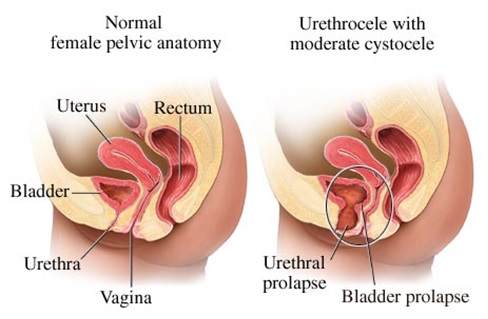
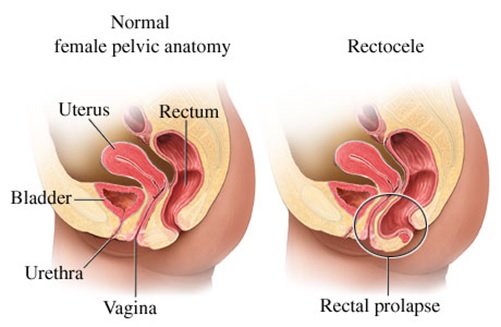
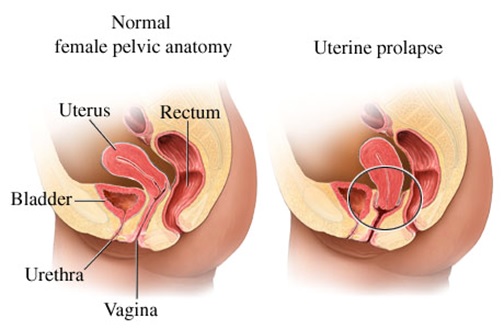
FEMALE COSMETIC GENITAL SURGERY

I helped develop and invent most of the procedures I do here in my office and Surgery Center over the past 30 plus years. Let me share with you my personal thoughts and insight on all of these. I have a book you can check out plus articles on the topics. These techniques and equipment used have become the standard worldwide with the help of my illustrious graduates and colleagues like Christine Hamori, John Miklos, Robert Moore, Marco Pelosi III, Neeraj Kohli, Troy Hailparn, Alexander Bader, Amr Seifeldin, Joao Brito Jaenisch, Sejal Ajmera, Suleyman Eserdag, Nabie Aherrera, and others. Very proud of my friends.


